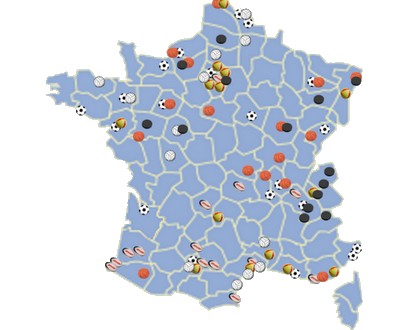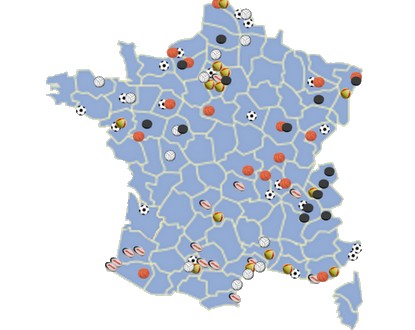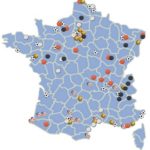The objective is to maintain France’s position among the top five sporting nations worldwide, while preserving the philosophy of the “dual project” for high-level athletes, aiming to combine sporting performance with educational, professional, and personal success.

The “sporting excellence pathway” identifies the different stages followed by athletes, as well as the structures involved.
This role played by high-level sports fully justifies the involvement of the State alongside elite athletes, federations, and the CNOSF to enable our athletes to excel on the international stage.
Beyond the initiatives and structures implemented by the State alongside the sports movement to allow France to compete with the best nations globally, high-level sport is primarily a story of extraordinary individuals. All the resources provided are nothing without the athletes who commit daily to performance.
- Concerned structures can be France centers or hopeful centers, based in or outside the ministry’s establishments, as well as structures associated with the pathway (sports clubs, private structures, family units…)
Meanwhile, the network of national public establishments of the State has been reformed to optimize their contribution to high-level policy:
• Renovation and reform of INSEP to maintain its rank among the leading sports performance campuses worldwide (60% of French medals at the Summer Olympics come from athletes trained at INSEP) and to make it a center of resources and expertise benefiting the entire French high-level sports network;
• Reform of national schools: creation of the French Institute of Horse Riding and the National School of Mountain Sports;
• Refocus the missions of CREPS, particularly on high-level sports, with priority given to France centers within the ministry’s establishments.
The dual project of high-level athletes
Considering that sporting success is inseparable from socio-professional success, the ministry responsible for sports has developed over 30 years a policy in favor of the “dual project” for high-level athletes (SHN) to enable them to achieve sports performances commensurate with their potential while ensuring their continued education and professional integration according to their capacities and aspirations.
• Financial aid
Personalized aid, direct financial support provided by the ministry responsible for sports to SHN within the framework of the objectives agreement ministry/federation.
They cover 4 areas: social aid, support for sports and training projects, compensation for loss of athletic or professional earnings, and performance bonuses (reference competitions).
The total amount allocated to personalized aid is 10 million euros for the benefit of SHN.
Bonuses are awarded to medalists of the Olympic and Paralympic Games. For the 2008 Olympics, they amounted respectively to €50,000, €20,000, and €13,000 for gold, silver, and bronze medals.
A total of 4,080,000 euros was awarded to athletes following the Beijing Games, and 491,000 euros to medalists of the Vancouver Games.
There are possibilities for regional aid in favor of SHN.
• Aid for education and competitions
The high-level athlete can retain grades from the general and technological baccalaureate for up to 5 sessions.
Appropriate schooling and study arrangements are implemented to allow SHN and hopefuls, students of general and technological high schools, vocational high schools, as well as those in apprenticeship training centers or apprenticeship sections and higher education, to continue their athletic career in the best conditions.
Title and age exemptions for public service competitions are granted to them.
Exemptions for certain entry competitions into paramedical training are granted annually.
A sports teaching competition is reserved for athletes who have been on the high-level athlete list for at least three years.
• Aid for professional integration
The employment adaptation agreement (CAE) in the public sector and the professional integration agreement (CIP) in the private sector allow an athlete holding a work contract to be partially available to their federation to successfully conduct their sports project while retaining their full salary.
With other administrations and the private sector, state aid partially compensates the employer’s effort and can be provided to the latter. These two types of agreements are implemented at national or decentralized levels.
In 2010, 761 SHN benefited from a CAE or CIP concluded either nationally or locally, and about 400 approximately in 2011. Among SHN registered in the Elite category, 31% are professionally integrated through a CIP.
This system mainly concerns SHN registered in the Senior (63%) and Elite (27%) categories.



